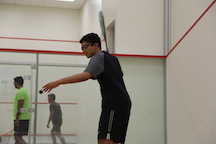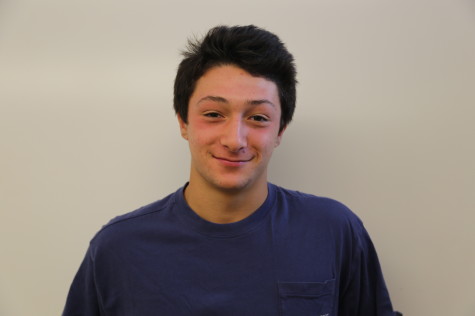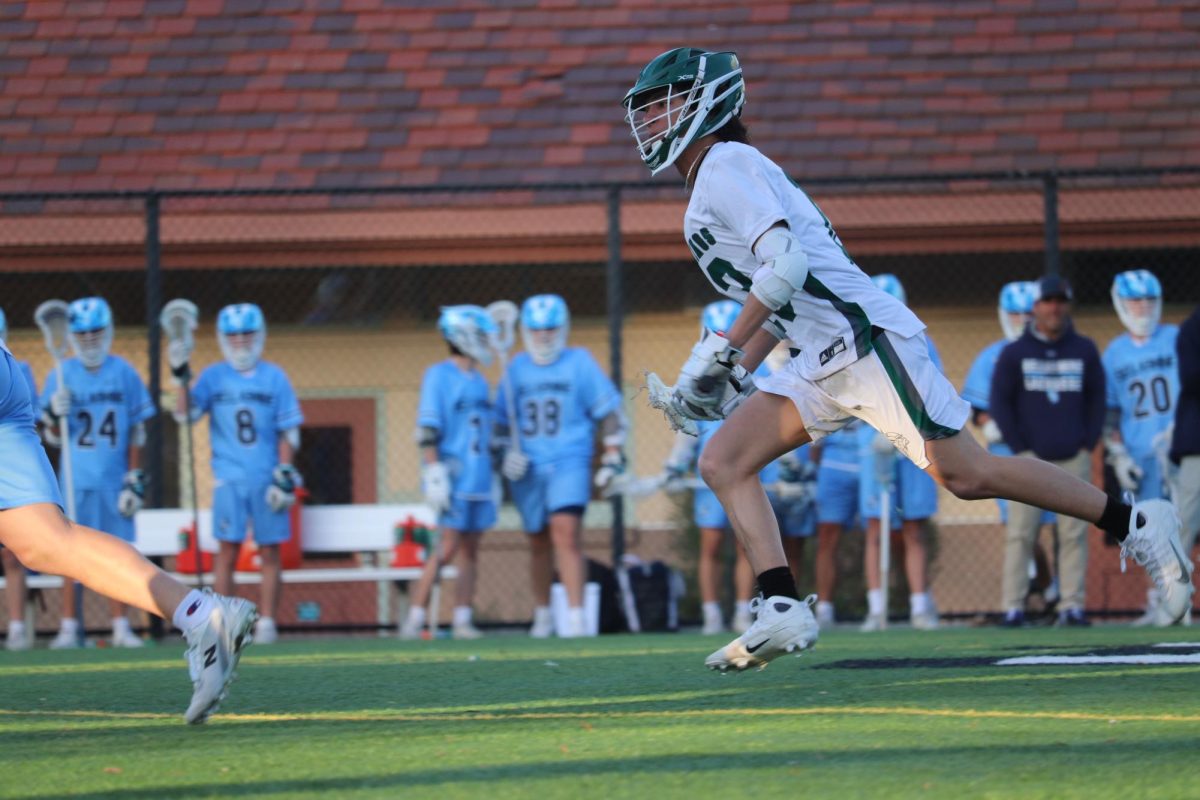Squashing the Competition: An in depth look at Aman Mittal

October 20, 2015
An average weekday for Palo Alto junior Aman Mittal (‘17) is very similar to every other 16-year old boy. It includes going to school, playing his sport of choice, and finding time around that to complete his homework load for the night. However, Mittal’s sport of choice is not football, soccer, or even tennis. For Mittal, nothing feels better than a squash racket in his hand.
“Squash, although the name of a common vegetable, is also a sport,” Mittal said. “It’s kind of like tennis with multiple walls. You have to hit the ball within certain boundaries in the court, and you can volley the ball or hit the ball off the bounce.”
Squash was first played before the first basketball was bounced or the first football was thrown. Squash is an adaptation of tennis that dates back to 1830, and was officially made a sport in 1864 once actual courts were constructed at a school in London. According to the World Squash Federation (WSF) as of 2009 at least 188 countries or territories have at least one court and over 20 million people play competitively. Unlike most sports, squash is played by a diverse community, from old generation to new.
“I started playing recreationally when I was around 6,” Mittal said. “I kept trying [racquet] sports until I was led to squash by my dad who used to play, as well as a family friend. I started to get serious about it when I was 11, and started competing in under-13 tournaments around California.”
This is a common experience for the majority of kids who start a sport at a young age: eventually choosing a favorite and sticking with it until the end of high school or, if they’re lucky, through college. What’s uncommon about Mittal’s experience is how quickly he was noticed. Ranked among the top 50 of his age group in the United States by the age of 16, Mittal isn’t new to pressure.
“There’s some pressure of constantly trying to get your ranking up, but I don’t let it get to me. I just play my game and have fun on the court,” Mittal said. “I always take away something new from every tournament I play and from every win and loss.”
Even with the consistent pressure on Mittal to be the best, remembering why he plays is important. Whether it be a stress reliever or a way to stay in shape, finding what makes a sport fun and sticking with it through the good and bad separates the great from the mediocre. Mittal’s reason is simply for his love of the game. Even though it has been ten years since he first started playing squash, Mittal still enjoys squash as much as he did the first day he played.
“I love the thrill I get from having a good rally with an opponent,” Mittal said. “I love the variety of shots that you can play and the quickness of the sport in general. It’s exhilarating and it’s a good way to get stress out of your system, as you can hit the ball as hard as you want against the wall.”
For Mittal, squash was love at first sight. The first step to success for every athlete is discovering what they love in a sport, and it didn’t take long for Mittal to find that with squash. For some players, the thrill comes from a great defensive or offensive play, a great rally or a nail-biter that they’re able to bring home. For Mittal, it is a lot simpler than that.
“I loved and still love hitting hard,” Mittal said. “I loved squash from when I started, and being able to play tournaments and have successful outcomes were a big plus to the enjoyment.”
Loving a sport is important, but perseverance is also a major component when it comes to being the best one can be. Mittal spends 18 to 20 hours playing squash or training for upcoming tournaments, because it isn’t easy to become one of the top ten western state players. It takes an incredible amount of dedication, effort, and time. Although plenty of Paly athletes complain about their own sport’s conditioning, squash is played almost continuously (90 seconds between each game) for 40 minutes or longer with no substitution. In other words, if a player isn’t already in amazing shape, it’s likely that their opponent will easily crush them.
“[I do] lots of long distance sprinting for endurance, as well as short sprints for reflexes,” Mittal said. “Footwork is key in squash… [and] I also work on my shots, like having the perfect drive, dropshot, boast, and kill shots.”
Of course, Mittal’s intense program of up to 20 hours a week of training takes a toll. Any athlete’s biggest fear is an injury, and sadly for Mittal he was diagnosed with patellar tendonitis two years ago when he noticed intense pain in his knee. Patellar tendonitis, also known as jumper’s knee, is common in high impact sports with quick changes of direction and explosion. The tendon connected to the knee cap is stressed and causes aches and pains when overworked. After a tournament, Mittal started noticing knee pains and went to the doctor to check up on it.
“I knew something was obviously wrong so it didn’t really surprise me,” Mittal said. “It sucked though.”
Taking time off of a sport can be devastating for a player, both physically and mentally. It’s common for players to lose confidence and fitness. Mittal was not one of those players, bouncing back stronger than before and with an optimistic mindset. He made sure to keep his mind on the end-goal: playing as much squash as he can to become the best he can be.
“Some physical therapy helped along with just simple breaks from playing,” Mittal said. “My mental state never changed because I knew I still have ways to go and I can only get better by leaping over this minor obstacle.”
Although arguably one of the most arduous sports to date, the WSF is still fighting to include squash in the Tokyo Summer Olympics of 2020. In 2009, the International Olympic Committee (IOC) chose to include seven-man rugby over squash for the following Summer Olympics. When asked about this, Mittal blamed it on the lack of international attention to the sport.
“Squash takes a great amount of skill just like any other sport. It’s underrated for what it actually is,” Mittal said. “It doesn’t make squash any more illegitimate of a sport just because it isn’t an Olympic sport.”
Since June 22 of 2015, squash has been shortlisted as one of the sports that still needs approval from the IOC. Squash has never been included in the Olympics and many hope 2020 could be the year to change history. With an
“I think it will happen,” Mittal said. “The sport is very common in other parts of the world besides America, but the sport is growing quickly here, so maybe we’ll be seeing it in the next couple Olympic Games.”
Just like in any Olympic sport, getting the privilege to play at such a level takes dedication for any player. Sadly, the highest paid Major League Eating competitor makes $52,000 more than the highest paid squash player. To put that in perspective, the average NBA player makes 29 times more money than the highest paid squash player. The majority of squash players have a second job to supplement their income according to the US Squash website. When a sport doesn’t have a great paying level above college, it makes the college level even more competitive. Despite the competition, Mittal’s dream is to play on a successful team in college.
“I’m having hopes of being recruited to a college with a good team,” Mittal said. “Many of the ivy league schools have amazing squash teams, and same thing with liberal arts schools on the east coast, such as Williams and Amherst. It’s hard to tell right now, but my goal is to play college squash for a good school with a good team.”
Like all great athletes, Mittal has a wonderful coach backing him up and guiding him along the way. Coach Gareth Webber has worked very closely with Aman for four years. Webber is from Wales, and is quite accomplished himself.
“I represented my country in all junior age groups and was a member of the National squad as a senior,” Webber said. “[I’ve been coaching for] 18 years.”
Not only is Webber a successful player, but he also coached for Yale’s men’s squash team from 2003 to 2011. There he earned the England Squash Level IV Elite Coach award, one of the most prestigious coaching awards held within the world of squash. To say the least, Mittal has many of the tools and guidance necessary to succeed. Through Weber’s coaching and hard practice, Mittal has improved all aspects of his game.
“His strengths are his timing of the ball and his speed,” Webber said. “He is very coachable and has a great work ethic.”
Both of these qualities go a long way when it comes to most sport, but playing squash means most of your hard work goes unnoticed. Most people who don’t play basketball know Michael Jordan by name and number, but there are very few who can name one professional squash player. In the United States, there are twice as many squash players as hockey players, and yet squash is rarely broadcasted on ESPN.
“I know that I’m not playing to get famous,” Mittal said. “There are well known people in the squash world that only squash players know of, so it’s a closer knit community in a sense.”
Despite the fact that squash creates a closer community, based on the numbers the sport should be reaching a much wider audience than it does. In the United States, professional and collegiate sports make money through advertisements in between plays or timeouts. Football is so widely reached because of its broadcasting. So why isn’t squash televised?
“Funding,” Mittal said. “Playing squash professionally would be a really cool experience, but the pay isn’t great. [That is,] unless you’re top 10 ranked in the world.”
Although funding is incredibly important to the growth of a sport, inspiring young children to begin playing squash would also be a strong step in the right direction. As most kids’ eyes aren’t opened to squash at a young age, it’s hard to find tweens and teens who have already found their calling to switch sports.
“I think squash will expand through players encouraging more kids to play, because that’s kind of how I started way back in 2006,” Mittal said. “This will be a more gradual change because there isn’t as much coverage of it in the U.S.”
Mittal is doing his own small part to introduce younger players to the sport through coaching. After coaching for the past year and a half, Mittal has found a way to share his passion for the sport he loves. Although not one of the most talked about sports, squash is great for kids to stay in shape and make new friends, because, according to Mittal, it’s a tight knit community. Even then, it means something a little bit more than just spreading the knowledge of squash to younger generations.
“I love working with the kids who are passionate about getting better at squash,” Mittal said. “Through coaching them, I’m able to learn things about my squash as well, to my surprise.”
Mittal started coaching less than two years ago, but he has quickly grown to love it. Trying to learn from every situation he is put in, Mittal has found a lot of things to learn from being around the kids he coaches. Coaching mainly seven to ten year olds has taught Mittal how to become both a more successful coach and player. With patience and leadership, Mittal has learned both how to better the kids and how to better himself.
“I learn about myself as a coach and as a player when I work with the kids,” Mittal said. “They help me understand what some major problems with all squash players are, but of course with them, it’s easier to notice the issues.”
Although coaching is fun on the side, Mittal’s first true love is the game, and he aspires to be as memorable to squash as Joe Montana to football, Stephen Curry to basketball, or even soccer players to Lionel Messi. Considering squash is not listed as one of the top ten sports played in the United States, young Aman Mittal did not have as many players to dream of becoming. With perseverance and dedication, Mittal has become a player for others to look up to, and he continues to work towards his goal of becoming the best he can be.










